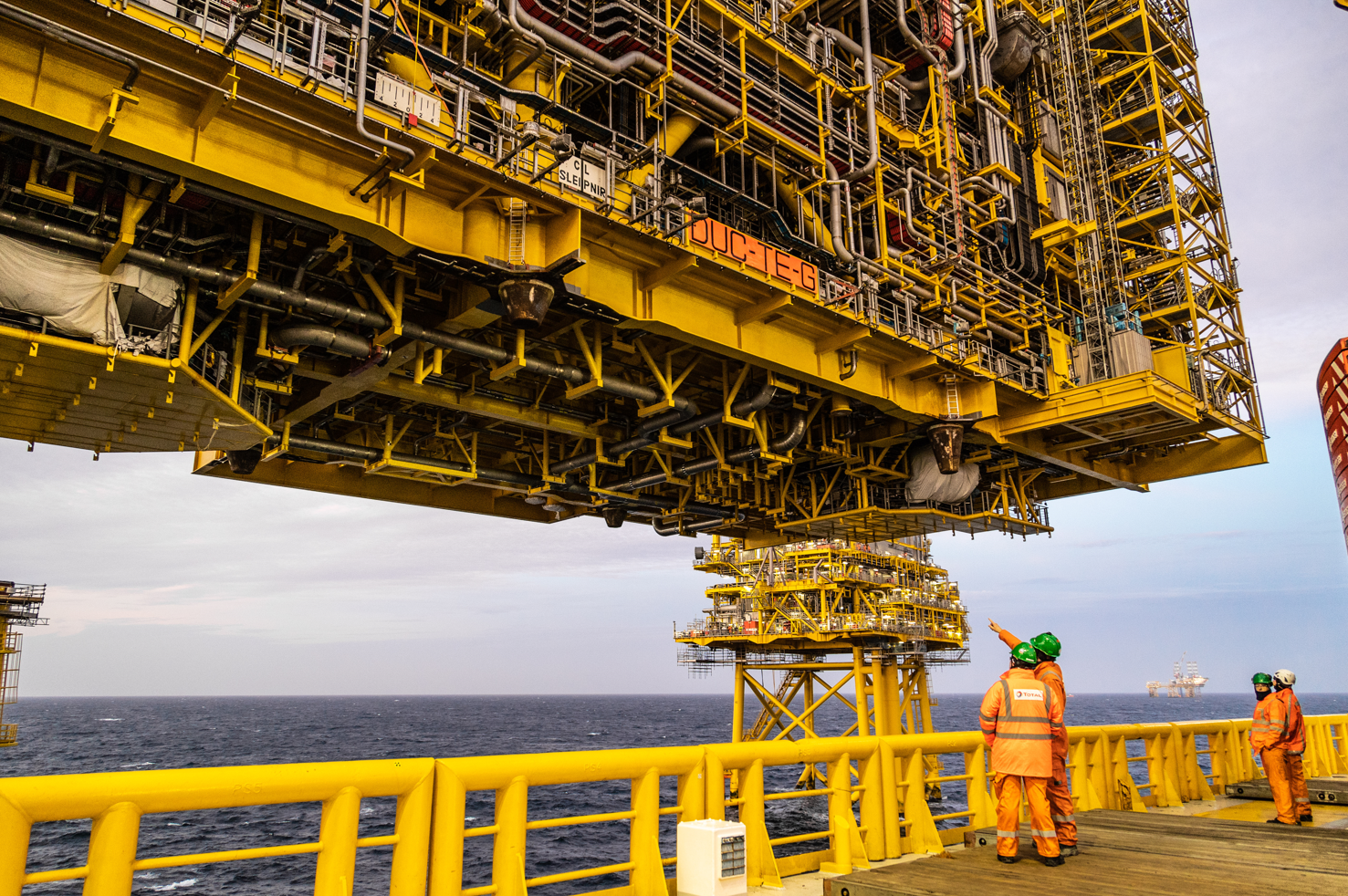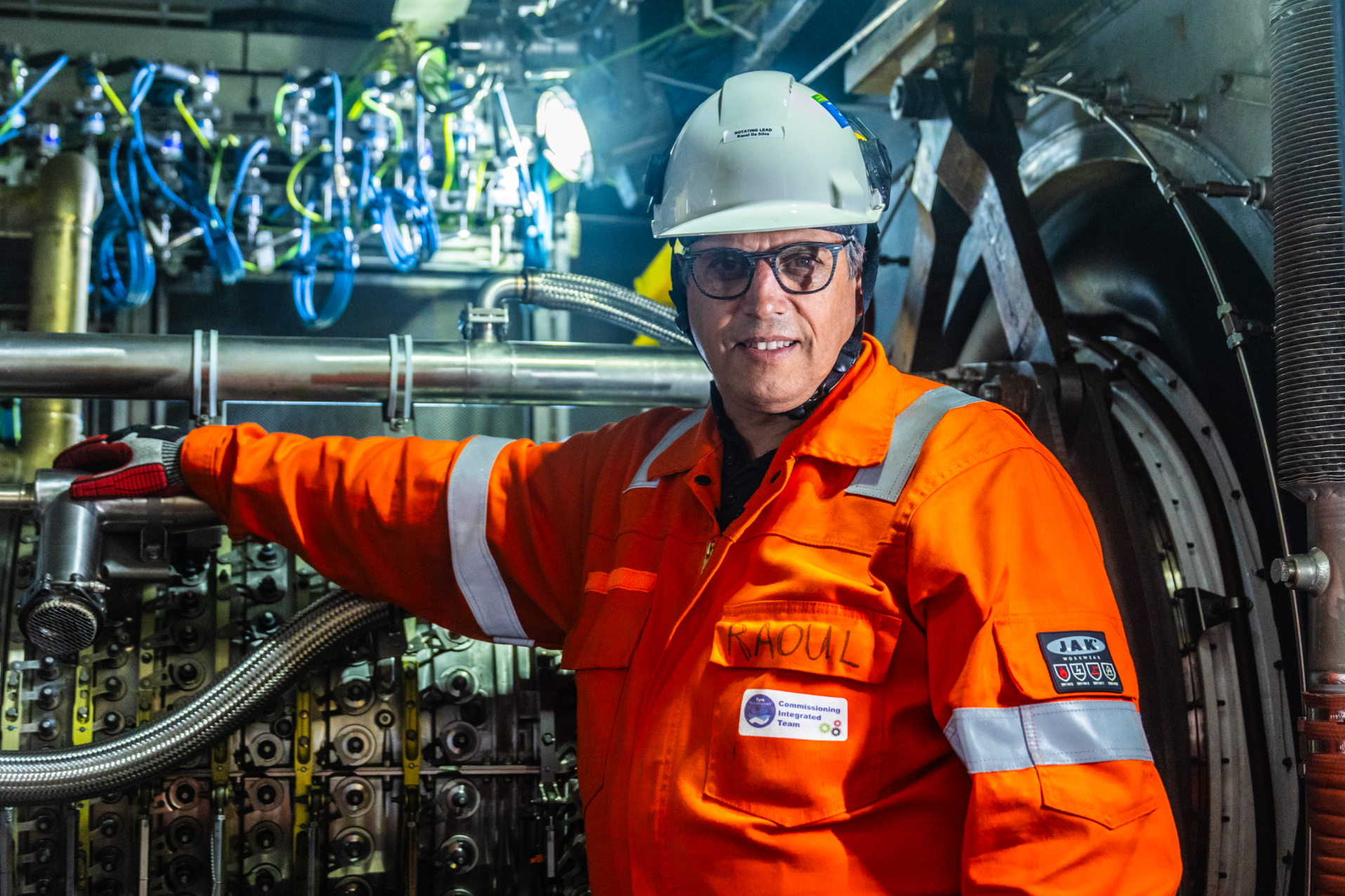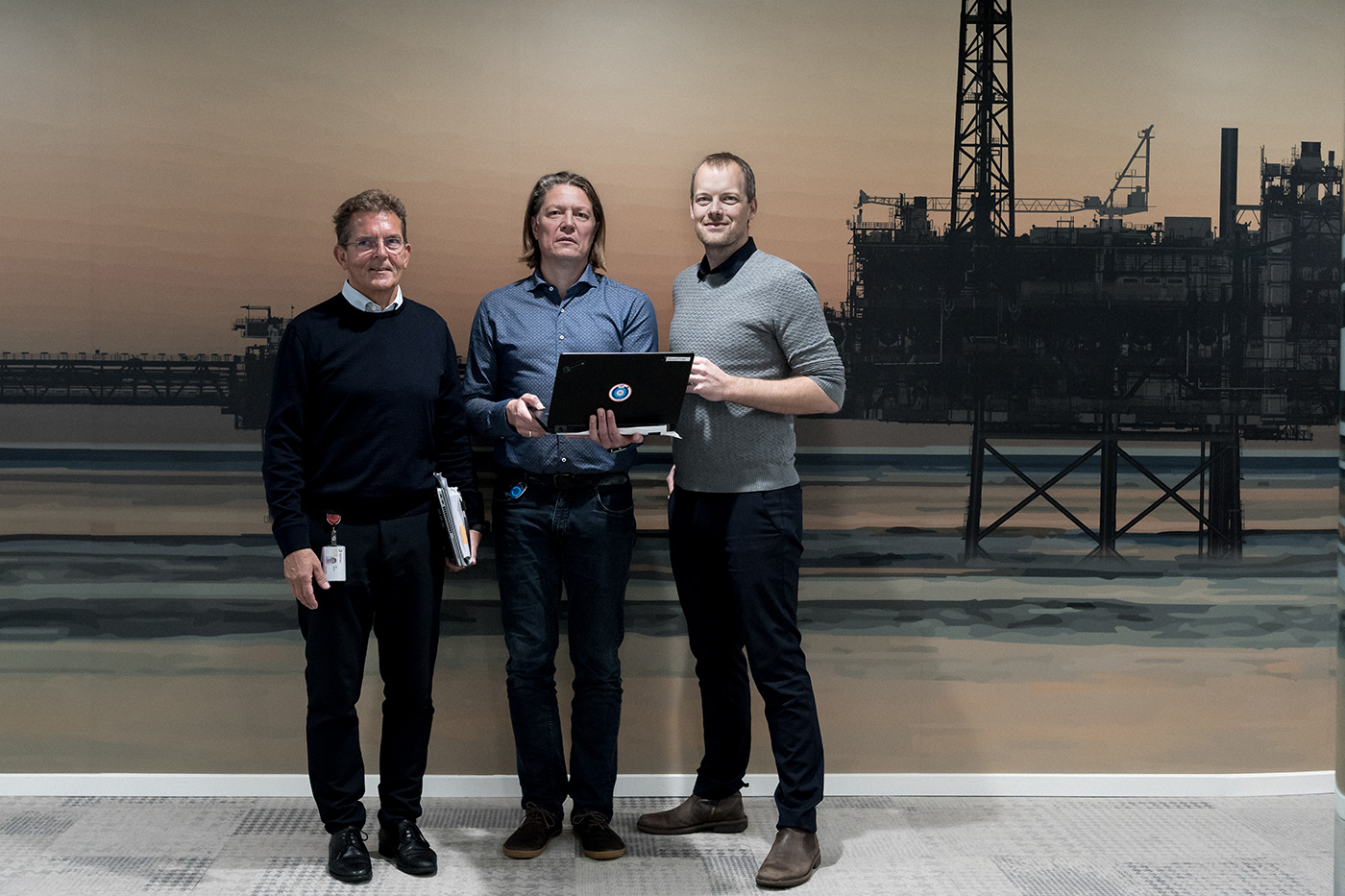
3, 2, 1 – action! – The world’s biggest lift takes centre stage
Absolutely nothing was left to chance. Everything was choreographed down to the smallest detail and everyone had a role to play as if it were a Hollywood production, when the largest platform - the 17,000-tonne process module - was lifted into place on six legged jackets in the North Sea on 4 October 2022.
The process module corresponds to a weight of more than two Eiffel Towers and an area of one and a half football pitches, which was then raised and put in place by the world’s largest crane vessel in a single lift.
The processing platform contains the Tyra II field’s production facilities. This is where natural gas is processed before it is sent ashore.
The plant is more than 54 meters high, and it now stands on six jackets 28 meters above the surface of the sea. Simply starting the installation of the processing platform is a unique achievement. A new world record was set for the heaviest crane lift ever undertaken on the open sea when the huge platform was put into position.
A Hollywood script
This is how Jens Kloster describes the work that was done when the process module was lifted into place. He is the Decommissioning, Transport & Installation Manager for Tyra Redevelopment at TotalEnergies EP Danmark.
“Everything followed a very detailed and thoroughly prepared manual written by engineers, experts and specialists. Everything was handled point by point and the more than 200 persons involved all had a defined role to play. The two crane operators played the starring roles; from each crane cabin they had to execute this impressive lifting operation with a precision of down to a few millimeters,” says Jens Kloster, adding:
It requires a lot of coordination when lowering the process module onto the six existing jackets out in the North Sea, 40 metres down to the seafloor
- Jens Kloster, TotalEnergies EP Denmark

“Everything was monitored very closely. Do this first and then that. Cross it off the list. It’s like when a pilot runs through a checklist before taking off in an airplane. This is how the two crane operators made progress with their work, sitting 50 meters up in the air, with the process module hanging between them from separate hooks. This requires a lot of coordination when the time comes to lower it onto the six existing jackets out in the North Sea, 40 meters down to the seafloor.”
To be completely honest, the huge crane vessel is very unusual and is like no other crane of its kind. You could call it a hotel. But you probably shouldn’t tell that to our families back home
- Jens Kloster, TotalEnergies EP Denmark
The most important prop – the world’s largest crane vessel
The process module was built in Batam in Indonesia and shipped to Denmark in 2022 in a single piece.
After it arrived in the North Sea the 3rd of October 2022, the installation started and the crane vessel, Sleipnir, which is longer than four Olympic swimming pools at 220 metres, took over.
The enormous vessel used both of its two cranes, each of which is capable of lifting 10,000 tonnes, when the heavy platform was lifted into position.
Stability and calm were crucial factors here. Fortunately, Sleipnir is a very seaworthy vessel. Jens Kloster explains:
“In the old days, people used to sail out to the work area and lay anchors, but today the anchors have been replaced by intelligent control systems, which keep the vessel in position at all times. In other words, the enormous ship is afloat at sea, but it maintains its precise position by means of a complicated positioning system. The ship measures the weather, wind and wave conditions and uses this information to compensate and keep the ship perfectly stable at all times. It is the most advanced system in the world and it means that the enormous vessel will only move a few centimetres even in harsh wind or wave conditions,” says Jens Kloster.
A floating hotel
This is the heaviest lift that has been carried out in the world to date. It takes about six hours and the total work period for lifting the platform and the subsequent assembly and welding will take about ten days. Fortunately, the crew onboard will not get bored in the meantime.
“To be completely honest, the huge crane vessel is very unusual and is like no other crane of its kind. You could call it a hotel. But you probably shouldn’t tell that to our families back home,” says Jens Kloster, laughing as he talks about life onboard.
“There are multiple sports pitches and indoor activities, and we hold tournaments out there, including basketball and table tennis. If the weather is good, we fill up the outdoor pool. The food is also really good. You almost need to go on a diet after you’ve been out there. Luckily, there is also a large fitness room onboard,” says Jens Kloster, smiling.


Facts about the installation
- More than 260 people execute the lifting of the process module, two bridges and one flare onboard Sleipnir in October 2022.
- Sleipnir is the world’s largest crane vessel from TotalEnergies’ EPC contractor Heerema Marine Contractors. Sleipnir’s two huge cranes can lift a weight of up to 20,000 tons. The vessel is 220 meters long and 102 meters wide – a size equivalent to approximately 3 football fields.
- Sleipnir has been part of the Tyra removal campaign and helped install the new jackets in September 2020 as well as the remaining new Tyra II modules including the accommodation module, six well head and riser modules, and 4 bridges in September 2021 and April 2022.
Facts on the process module
- The processing module is 47 meters tall, measures a total floor area of 16,300 square meters, and weighs 17,000 metric tons – equivalent to the weight of more than two Eiffel Towers.
- At peak, the process module will be able to process 300 million standard cubic feet gas per day which is coming from both Tyra and five unmanned satellite fields, namely Tyra Southeast, Harald, Valdemar, Svend and Roar.
- The process module is built with high-end materials, and there are sensors on all the critical equipment (e.g. compressors, pumps, heaters) which continuously collect data and will allow the control room operators to monitor the condition and performance of Tyra II around the clock.
- With the use of new technology and modernized working processes, TotalEnergies anticipates that Tyra’s operational efficiency will increase from its current average of around 80% to more than 90% after launching. Electrically driven equipment motors that are fed with power from the gas turbine generators are just one of the contributors to this.









